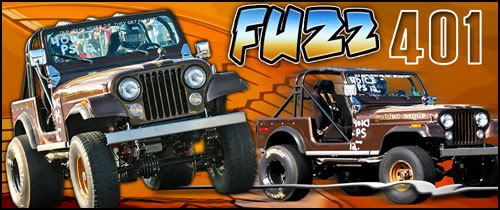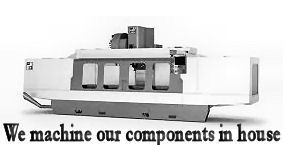With apologies to my sister the veterinarian, there is more than one way to skin a cat and more than one way to measure piston-to-valve clearance. I’m not an authority on cat skinning (nor do I want to be), but I do know about the importance of proper valve clearance in a racing engine. I see hundreds of engines come through our shop every year, and I’m alarmed by how many engines assembled by do-it-yourself builders have incorrect piston-to-valve clearance.
There are two ways to get it wrong. The first is usually catastrophic: If you have insufficient clearance, the pistons hit the valves, followed by the predictable parts damage. On the other hand, if you have too much clearance, the engine will run, but it won’t achieve anything close to its performance potential. In either situation, you’ve wasted time and money that could have been saved by checking piston-to-valve clearance properly.
Here is the method we use at Reher-Morrison Racing Engines. Not everyone may agree with our technique, and that’s all right. I am convinced, however, that it is the best way to achieve repeatable, accurate results.
First, put away your clay and your light-tension checking springs. The time-honored practice of mocking up a motor and putting clay in the valve pockets to measure clearance introduces too many variables to be trustworthy. The amount of clay on the piston top, the density of the clay, the effect that the clay has on the relative positions of the valve and piston, and the difficulty of measuring the thickness of the compressed clay accurately are just a few of the sources of potential error with this method. You don’t use clay to measure piston-to-wall clearance and bearing clearance, and you shouldn’t use it to measure valve clearance either.
You must use the same components when checking valve clearance that you intend to use when you assemble the engine. This includes the same lifters, the same pushrods, the same rocker arms, and the same valve springs. Light-tension checking springs simply can’t duplicate the load and deflection that the valvetrain experiences with stiff race springs. The difference in actual valve clearance between checking springs and race springs is typically .020 to .030-inch. If you set up your engine with checking springs with .075-inch intake valve clearance, the actual clearance with race springs will be closer to .100-inch.
The first step in the Reher-Morrison method is to determine whether the valve pockets are located properly. A discarded valve that fits your cylinder head makes an ideal tool. Cut off the head of the valve and turn the stem to a point. Preassemble the engine with your bare cylinder heads (remember to use a previously compressed head gasket), put masking tape on the ring lands to center the piston in the bores, a bring the piston to 10 degrees before or after Top Dead Center (it doesn’t matter which at this point) and drop your homemade punch into the intake and exhaust guides. Give the punch a gentle tap to mark the valve stem centerline on the piston and then remove the head.
To check the valve pocket location, remove the cylinder head and set a pair of calipers to the radius of the valve head (for example, for a 2.500-inch diameter valve head, set the calipers at 1.250-inch). With one point centered on the punch mark, swing the other point around the valve eyebrow. If the caliper hits the edge of the valve pocket, so will the valve. I recommend a minimum of .050-inch radial clearance between the edge of the valve and the pocket.
If the valve relief is located properly, you must then check its angle. Again, a discarded valve with the proper stem diameter makes an excellent checking tool. Weld or epoxy a small steel ball onto the edge of a steel valve. Mark the tip of the valve stem with a notch in line with the ball as a reference point. If your engine has two different valve angles – a big-block Chevy or Cleveland Ford, for example – you will need to make intake and exhaust checking valves.
Insert the checking valves into the bare head and install the head on the preassembled short block. Bring the piston to 10 degrees before or after TDC. Put a dial indicator on the tip of the valve stem and slowly rotate the valve with your fingers. If the stem rises and falls as the ball travels around the valve notch, the angle of the relief is incorrect. You can draw a “road map” by noting the position of the reference notch as you turn the valve. For example, if the valve stem rises near the top of the dome and falls at the bottom of the valve notch, then the angle of the valve relief is too steep. Using this technique, you can precisely determine how much material must be machined to correct the angle of the valve relief.
After you have established that the valves have enough radial clearance in their respective notches and that the angles of the valve reliefs are correct, you are finally ready to check piston-to-valve clearance. Assemble the short-block and cylinder heads with the valvetrain components you intend to use. Adjust the valve lash, set up a dial indicator on the valve spring retainer so that its plunger is parallel to the valve stem, and bring the piston to 10 degrees BTDC. Compress the spring on the exhaust valve and measure the movement required for the valve to contact the piston. (We used a tool similar to a valve spring tester with a solid bar instead of a flat spring to compress the valve spring.) Move the dial indicator setup to the intake valve, rotate the crankshaft to 10 degrees ATDC, and repeat the procedure.
This procedure and a little patience will ensure that your engine’s piston-to-valve clearance is measured correctly. The ideal clearance dimension for your combination will depend on the weight of your engine’s valvetrain components (especially whether you use steel or titanium valves), the maximum rpm, the tension of the valve springs, the characteristics of the camshaft, and other factors.
In most instances, off-the-shelf pistons have valve pockets that are too deep and provide much more valve clearance than is really necessary. This is perfectly understandable, because the piston manufacturers can’t anticipate every possible combination of cylinder head, camshaft, block height, valve height, gasket thickness, etc. They don’t want to hear from an angry customer who crashed all the valves in a new engine, so the piston makers typically machine the reliefs in shelf-stock pistons with clearance for the worst case scenario. Then to compensate for the oversize valve reliefs, the piston dome is made taller to produce the advertised compression ratio.
The downside of this situation is that overly generous valve reliefs cost horsepower. For example, a 2.50-inch diameter valve pocket that is .100-inch deeper than it really needs to be has a volume of 8 cc’s. That much volume at TDC can significantly lower the compression ratio, reducing efficiency and power. It’s much better to have the proper piston-to-valve clearance and a shorter dome that doesn’t intrude as far into the combustion chamber.
Imagine two engines with the identical compression ratio. One has pistons with valve reliefs that are too deep and domes that resemble Mt. Everest; the second has pistons with optimized valve reliefs and shorter, rounded domes. Both engines have the same volume above the piston at TDC, but the engine with the proper valve reliefs and shorter domes will have a substantial horsepower advantage.
Measuring piston-to-valve clearance properly is one of the basic operations that every novice engine builder should master. It’s not as sexy as flow bench testing or as high-tech as running dyno simulations on your laptop, but it is an absolutely essential step in building a reliable and powerful racing engine.





 Reply With Quote
Reply With Quote








